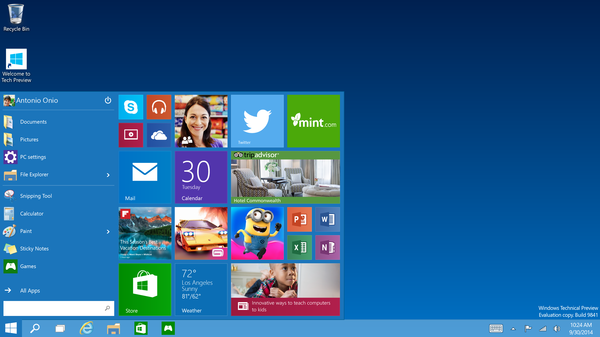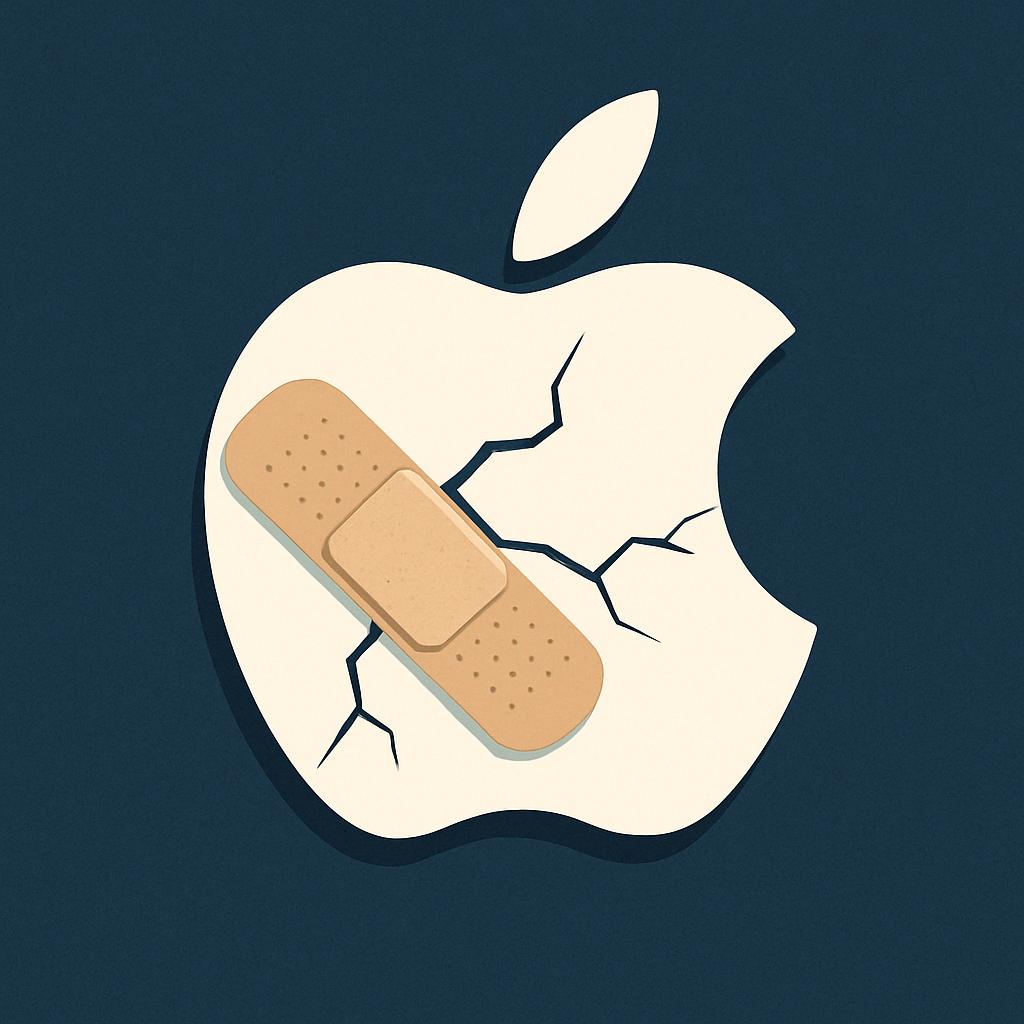On Tuesday, 23 April 1985 the Coca-Cola company made a shocking announcement. They were going to introduce “New Coke” on the company’s centenary anniversary. The new drink would not only taste better being sweeter than the century old formula, it was healthier, pandered to the whims of vegetarians, was kosher and halal.
This was everything the old formula was not and everything pointed to the new drink being an overwhelming success. Except it wasn’t. In fact, the new product launch was a disaster.
So what was their mistake? It was not the market research. They had done an extensive one earlier on before as part of their bid to introduce a new Coke which was part of their secret project named “Project Kansas.” They had used samples, surveys, and focus groups and the result was an overwhelming preference for the new drink.
However, they also discovered that about 10-12% of the people whom they surveyed were very angry at the very thought of New Coke. The small group exerted significant peer pressure on the rest so much that when the New Coke was later officially launched this group influenced the rest of the Coke market. This led to the eventual failure of the product line, which despite all efforts was later withdrawn even with all its “goodness.”
Parallels of the New Coke can be drawn with Microsoft’s efforts with Windows 8 and Ubuntu’s Unity desktop. Contrary to what has been said by some so-called technology blogs, both initiatives were not pulled out of the thin air and forced on unwitting users. They were both outcomes of research.
Unity was a desktop that had previously shipped as part of the Ubuntu Netbook Remix flavor of the Ubuntu operating system for a while before it supplanted GNOME to become Canonical’s default user interface on the Ubuntu Desktop in Ubuntu 11.10. It is important to note that Unity was, just like New Coke, a result of “secret research” in computer user habits and an attempt to better serve the user based on these habits.
The result was a backlash from a small portion of very vocal users who were mostly made up of a minor group of so-called power users who felt alienated and wanted things like the ability to move the Unity launcher from the right to the left and lamented the fact that the Unity Desktop was less customizable.
This small group of people kicked up such as fuss, with posts like “Linux Torvalds uses XFCE” and “Distrowatch shows Linux Mint is the most used Linux Distro” and other words to that effect that seemed to imply that the whole Ubuntu world was in an uproar and did not like the changes.
This was in spite of multiple surveys clearly showed that Unity was and still is the most used Linux Desktop environment. There are still a lot of Unity bashing posts out of there by people who have never even used Unity.
Not long after Ubuntu introduced Unity as the default Desktop early in 2011, a change whose implementation was delayed until 11.10, Microsoft made a phased release of various versions of its Windows 8 operating system. Its reception was way better than what Vista had received but still it was a less than ideal reception.
The operating system was nothing but polarizing while a group of users warmly embraced the radical changes a significant number of users were nonplussed by the whole thing. Even though, Microsoft claimed that this was a result of research on user habits and experiences and an attempt to solve them, a lot of people were not convinced. Not even after a hasty “patch” came in the form of Windows 8.1.
What did they all do wrong?
Although in the case of Unity and Windows 8 there were a number of bugs at first, I strangely feel there were more bugs in the former than in Windows 8. At the beginning based on my experience, the operating systems had evolved in a bid to solve perceived customer problems. These problems had all been identified using some form of limited scope research and usually in secret research projects.
In my opinion the problem was not in the inventions themselves but rather in how they were adopted and used. Professor Elton Mayo a business theorist once conducted a series of human experiments (this sounds more awful than it really is) at Hawthorne Works at Illinois and came up with what has been known ever since in business circles as the Hawthorne effect.
To paraphrase it: it does not matter how good a change is, as long as those people who are affected by the change do not feel that there were properly consulted in effecting the change they will in all likelihood reject it. The converse is also true: people will accept any change no matter how bad as long as they feel they were part of that decision.
In all the cases above, those who felt aggrieved by the changes were nit-picking because they felt they were not part of the decision to effect a change that all affected them. People woke up one day and were told they had to make do with New Coke, their Desktop world had been upended and now they had to use Unity or the Start Screen or take the hit the highway.
A small minority aided by competitors and rivals like Pepsi for Coke; GNOME,KDE and Linux Mint for Unity and Ubuntu and a host of various companies for Windows seized on this opportunity to create the perfect storms as they jostled to grab market share.
The aftermath
All three companies reacted differently to these whirlwinds. Coca cola hurriedly reintroduced the old Coke and renamed the New Coke, Coke II which they pretty much ignored until they finally put it out of its misery in 2009, decades after its introduction.
Mark Shuttleworth on the other hand obstinately hung on to his dream in the face of adversity and fierce criticism and eventually succeeded in winning hearts in Ubuntu 12.04 LTS when most people finally embraced his dream as the Unity project became more mature.
The folks at Microsoft have been feeling a lot harried for a while now so much they have flirted with different solutions like Windows 8.1 which was not all that popular in solving some of the people’s demands before finally coming up with Windows 10.
From all the reviews I have perused, it is as much a revolution as it is about stymieing some of the objections raised in Windows 8 from resurfacing. It aims to do what Windows 7 did to Vista. They have also been more vocal about the impending features and promoted the pre-release versions.
The lessons
While it is true that a lot of lessons can be drawn from the Coca Cola, Unity and Windows 8 stories such as not to hastily introduce products to the market before ironing out the kinks, the major lesson for me is that it is always important to involve the customer when developing New Products no matter how big you are or risk pissing them off.
Your competitors, the sharks that they are, will grab the opportunity to bury you as well. Don’t just send a curtly worded email or SMS informing them of a change that will shortly be implemented. Give them ample time to absorb the intended change and its implications.
The first rule of change; Don’t just flip the switch and hope for the best. It will buy you a lot of goodwill to warn and consult people in the first place. People we are about to flip the switch because…. (insert bulls**t reason here). You will be surprised how many of your customers will welcome the change even if it is an adverse one because they feel involved.
I mean we all cannot be like Linus Torvalds with his father knows best attitude, he insults everyone even his friends, wears sandals and a T-shirt to work, does whatever else the heck he wants and not just gets away with it but everyone loves him for it.
Image credit: Windows Blog














Comments
25 responses
not wanting to sound critical but the case studies you gave do not show your conclusion, you might as well made your point without them as you did not show cause to effect. would have been good if u have given us the examples where the said companies reintroduced the products with active engagement of the said users to validate your point.
I like your elegant style of writting. As a reader i have something to take home and it was worth my time going through the article. I agree with Customer driven approach to product / service evolution for the simple reason that the customer is the very essence of business both in its past and the future.
Elegant, out of it and out-of-this-world-academic.
Use the command line and drink New Coke.
New Coke actually was less liked by people(I can only speak for the people in my area) because it didn’t taste good. Back in the 80s it was a discussion piece amongst the kids on my street.
For the computer products(Unity/Win8), the “power users” are the ones who suffer when changes are made. MS/Cannonical and anyone else making changes to support users best interest rarely if ever speak to people that know how to use their tech. They ask normal people that probably never wanted to learn their tech to begin with.
I know this sounds very ranty but if companies would find a balance of higher and lower end users and find a way to balance both needs, they wouldn’t experience the vitriol of the Windows 8 backlash. Finding balance is something tech companies never did well.
New Coke was too sweet, not acidic enough, didn’t have enough caffeine… all around a crummy product. After that experience the Old Coke will always be good enough for me!
Really, if it ain’t broke don’t fix it.
I don’t know when marketers are going to get the idea that IF THEY MAKE A CRUMMY PRODUCT PEOPLE WON’T BUY IT, and if they REPLACE A GOOD PRODUCT WITH A CRUMMY ONE, people DOUBLE WON’T BUY IT.
Won’t help to shout, the aliens can’t read Earthling.
There is nothing wrong with Unity – simplicity is a feature. There are certainly plenty of options for people who rather not use it.
My research into why Unity kept crashing suggests it’s simple If and ONLY if it happens to be compatible with your video card and its drivers, which is NOT the case with a good many people. I’m running it on a Dell Duo Core – not more than a five year old machine. Just the right age that Linux systems should have adapted to it perfectly.
It is true that, unlike with Windows, if you don’t like a Linux desktop you can usually just install a different desktop interface.
I didn’t know that Unity was the product of secret research in secret labs, LOL. That is anthithetical to the entire concept of Linux. Usually things are developed as an open project with plenty of input from actual earthlings. It certainly explains how they wouldn’t know their hot new desktop won’t work on computers more than 2 years old! I don’t think so!
Just for those outer space aliens who missed it, plenty of people run Linux OS’s on slightly older systems to save money – it’s part of the entire point.
I got a slightly older machine in order to begin migrating to Linux because Windows will clearly never be designed for Earthlings nor stable again. Computer is 64 bit and does have a dual core processor. No excuse for the aliens in the secret lab not knowing the Unity Desktop won’t run on this computer – except, of course that they’re aliens from another planet working in isolation in a secret lab.
I know it’s hard, because you’re marketing psychologists or whatever and not earthlings, but TRY and get it. If the product had been developed with open interaction from people like Linux OS’s normally are, the product that emerged would have worked on our computers.
Honestly!
Oh, and I left out that not only does the video card have to be compatible with Unity and its drivers compatible with Unity, but the video card has to have a gig of RAM or something to handle Unity! It’s far more than the usual learning curve with Linux of figuring out how to get it to work the way you want it to on your machine.
I ain’t got gnome to look quite like I want it to on my machine yet, though it is fairly stable – I seem to be stuck with those stupid idiotic big black bars across the top – which of course never bothered the aliens from other worlds who designed it.
Good article but wrong conclusion, at least in terms of Win 8. The problem is when companies go out and ask public at large what they want. People often don’t know what they want but when asked they all think they are experts. Have you seen Simpon’s episode when Homer was asked to design a car? Same result. You don’t re-arrange User Interface in the Operating System from release to release. People get used to it, in fact to the point, where it doesn’t matter anymore if there are better ways to solve it. That’s why most car manufacturers sticks to the same design choices – windshield wipers control and line change indicator controls are solved uniformly in most cars. If a car tries something different it will only confuse people. That’s why Mac OS X has not been introducing drastic changes from release to release. Perhaps one day Microsoft will learn this.
Um, anonymous…. THIS PLANET, if you please.
Windows 7 is a perfect operating system! There was NO reason to design a new anything!
B.S.
Unfortunately, the “Hawthorne Effect” has been pretty thoroughly disproven:
http://www.ncbi.nlm.nih.gov/pubmed/17091208
Ridiculous assumptions made in comparing these three very different product launches of substantially changed products. In Ubuntu, there was always the option of bypassing Unity for any power user. In other words, they weren’t affected and the non-power users moved to Mint. In the New Coke case, they pulled the previous product from shelves in an attempt to force consumer acceptance and that REALLY helped Pepsi and Royal Canadian gain market share as former Coke drinkers switched to other more palatable products. As for Windows 8, the GUI changes were not really the problem, the seriously demented way in which two completely different interfaces were jammed together was the problem. You cannot simply change to an entirely new user interface and retain most of the former one as well to carry legacy software. You either force a wholesale migration, or you upgrade the prior OS, you cannot do both. Unfortunately, there is no Windows mint, or Pepsi version of Windows for our poor MS trapped consumers and they have to upgrade, face product end of life, or change systems entirely.
I guess the reason Apple is so successful is because they design their product by user committee too……NOT!
I don’t know how Apple does it. Perfect they certainly ain’t… must be the quality control. They’ve made some strange decisions lately, but still they make a far better product than Windows 8. I’ve tried the new MAC desktop, and, while I don’t like it, it was a far shorter learning curve than Windows 8, far more user friendly, and FAR MORE STABLE. Apple makes products that work and then supports them. It’s taht simple. With that said, of course, it’s PEOPLE WITH ALOT OF MONEY who are Apple customers – always will be. It costs alot of money to be a MAC user!
But thanks for pointing out that the success of a product is the result of how good it is, not who was or was not consulted while designing it!
Oh, THAT explains why the Unity desktop is so different from Ubuntu AND so unstable. I couldn’t even keep my machine running with it for five minutes at a time. Went to gnome – hmmm.
Ubuntu is good to learn with, but it’s so different from the texts that were why I chose Ubuntu there’s no advantage to it. Maybe I’ll start over with Zorin.
As for Windows 8 – it DIDN’T WORK, it’s RIDICULOUS LOOKING, and it’s UNSTABLE. Anyone who uses it is stark raving insane, or just plain lazy.
Why can’t they be both?
As a “power user” I’d say both Unity and Win8 were seriously flawed from a usability design point of view. There is more to a UI than just pretty graphics but they have forgotten (or more likely never learned) the other fundamentals to GUI design.
Asking a mouse user to use “gestures”, hiding important menus unless hovered over (making full screen operations in an app treacherous), “flat” design camouflaging click zones, bad menu groupings, etc…all bad design that looks “simpler” but is actually harder to use.
If these designs ate based on research then the research must have been badly designed or the bunch of Homer Simpsons that it is based on really didn’t know what an OS GUI should do.
The previous Gnome was close to perfection: A work space, tool bars, and the Three Menus: Programs, Places, System. To remove this essential functionality indeed felt like betrayal…the triumph of marketing and graphics over solid engineering. Ubuntu tore defeat from the jaws of victory and it is a real shame.
New Coke did not taste good, and Windows 8 made it much more difficult to use full programs, providing the user with limited Apps, even if you were not on a tablet where apps may be preferred. Even though I have used multiple versions on Ubuntu, I’m not recalling the specific version spoke of, but will say I like Ubuntu largely for it’s flexibility. I would disagree with most all of this writers findings.
Loved the article:
Personally, i had no gripes with Win8 except for the search, which is awfully slow for me. It is faster for me in other respects (such as boot up time) and I kinda loved the gestures. But then, I completely understand why most people dont. Frankly, Its hardly intuitive and felt unpolished in some places, especially the desktop version, but when i ‘got the hang of it’, it was fun.
True, it wasnt a worthy successor to Win7, but I feel it received more hate than it deserves and I think the article nailed it
i agree with anonymous sometimes people don’t know what they want. i have been using ubuntu as my main system since ubuntu 10.04(lucid lynx) although sometimes i distro hope to if i hear something interesting happening at other distros.
Ubuntu didn’t just force people to unity it gave people 2 release to choose between various desktops on the transition from gnome to unity.
Unity wasn’t a result of research into how customers use their computer it is a vision create a unified platform from mobile to desktop(hence unity). Let leave it there without getting into to much detail.
Windows was attempting to do the same thing although I don’t know if it was based on how users use the computers. But looks like they were trying to unify users based on theresponses on the mobile OS.
Different distro exist for different reasons. People use linux for different reason not just to run try to give life to old hardware.
Just to prove that people don’t always know what they want before the release of the ipad. Concept images were being posted all over online which can be reasonably assumed that that what people wanted to see but the final product was very different an people liked it a lot. i think its 30% listening 70% anticipating